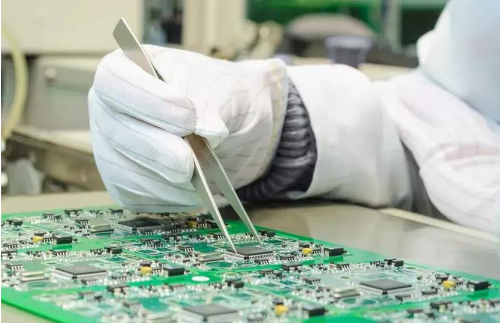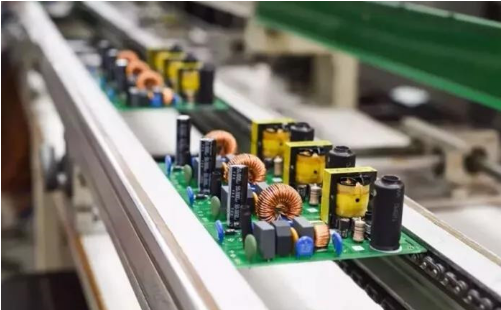1. SMT Patch Processing Factory formulates quality goals
The SMT patch requires the printed circuit board through printing welded paste and sticker components, and finally the qualification rate of the surface assembly board out of the re -welding furnace reaches or close to 100 %. Zero -defective re -welding day, and also requires all solder joints to achieve a certain mechanical strength.
Only such products can achieve high -quality and high reliability.
The quality goal is measured. At present, the best internationally offered internationally, the defect rate of SMT can be controlled to less than equal to 10ppm (ie 10×106), which is the goal pursued by each SMT processing plant.
Generally, the recent goals, mid -term goals, and long -term goals can be formulated according to the difficulty of processing products, equipment conditions and process levels of the company.

2. Process method
① Prepare the standard documents of the enterprise, including DFM enterprise specifications, general technology, inspection standards, review and review systems.
② Through systematic management and continuous surveillance and control, the high quality of SMT products is achieved, and SMT production capacity and efficiency are improved.
③ Implement the entire process control. SMT Product Design One Purchasing Control One Production Process One Quality Inspection One Drip File Management
Product protection one service provides a data analysis of one personnel training.
SMT product design and procurement control will not be introduced today.
The content of the production process is introduced below.
3. Production process control
The production process directly affects the quality of the product, so it should be controlled by all factors such as process parameters, personnel, setting each, materials, エ, monitoring and testing methods, and environmental quality, so that it is under control.
The control conditions are as follows:
① Design schematic diagram, assembly, samples, packaging requirements, etc.
② Formulate product process documents or operation guidance books, such as process cards, operating specifications, inspection and test guidance books.
③ The production equipment, workstones, card, mold, axis, etc. are always qualified and effective.
④ Configure and use appropriate surveillance and measurement devices to control these features within the scope of specified or allowed.
⑤ There is a clear quality control point. The key processes of SMT are welding paste printing, patch, re -welding and wave welding furnace temperature control
The requirements for quality control points (quality control points) are: quality control points logo on the spot, standardized quality control point files, control data
The record is correct, timely, and clearing her, analyze the control data, and regularly evaluate PDCA and pursuable testability
In SMT production, fixed management shall be managed for welding, patch glue, and component losses as one of the content control content of the Guanjian process
Case
Management of Quality Management and Control of an Electronics Factory
1. Import and control of new models
1. Arrange pre -production convening of pre -production meetings such as production department, quality department, process and other related departments, mainly explain the production process of the type of production machinery and the quality of the quality of each station;
2. During the production process process or engineering personnel arranged the line trial production process, the departments should be responsible for engineers (processes) to follow up to follow up to deal with the abnormalities in the trial production process and record;
3. The Ministry of Quality must perform the type of handheld parts and various performance and functional tests on the type of testing machines, and fill in the corresponding trial report.
2. ESD control
1. Processing area requirements: warehouse, parts, and post-welding workshops meet the ESD control requirements, laying anti-static materials on the ground, the processing platform is laid, and the surface impedance is 104-1011Ω, and the electrostatic grounding buckle (1MΩ ± 10%) is connected;
2. Personnel requirements: Wearing anti -static clothes, shoes, and hats must be worn in the workshop. When contacting the product, you need to wear a rope static ring;
3. Use foaming and air bubble bags for rotor shelves, packaging, and air bubbles, which need to meet the requirements of ESD. Surface impedance is <1010Ω;
4. The turntable frame requires an external chain to achieve grounding;
5. The equipment leakage voltage is <0.5V, the ground impedance of the ground is <6Ω, and the soldering iron impedance is <20Ω. The device needs to evaluate the independent ground line.
3. MSD control
1. BGA.IC. Tube feet packaging material is easy to suffer under non -vacuum (nitrogen) packaging conditions. When SMT returns, the water is heated and volatilizes. Welding is abnormal.
2. BGA control specification
(1) BGA, which is not unpacking the vacuum packaging, must be stored at an environment with a temperature of less than 30 ° C and a relative humidity of less than 70%. The period of use is one year;
(2) The BGA that has been unpacked in vacuum packaging must indicate the sealing time. The BGA that is not launched is stored in a moisture -proof cabinet.
(3) If the BGA that has been unpacked is not available to use or the balance, it must be stored in the moisture -proof box (condition ≤25 ° C, 65%R.H.) If the BGA of the large warehouse is baked by the large warehouse, the large warehouse is changed to change it to use it to change it to use Storage of vacuum packing methods;
(4) Those who exceed the storage period must be baked at 125 ° C/24HRS. Those who cannot bake them at 125 ° C, then bake at 80 ° C/48HRS (if it is baked multiple times 96HRS) can be used online;
(5) If the parts have special baking specifications, they will be included in SOP.
3. PCB storage cycle> 3 months, 120 ° C 2H-4H is used.

Fourth, PCB control specifications
1. PCB sealing and storage
(1) PCB board secret sealing unpacking manufacturing date can be used directly within 2 months;
(2) The PCB board manufacturing date is within 2 months, and the demolition date must be marked after the sealing;
(3) The PCB board manufacturing date is within 2 months, and it must be used for use within 5 days after demolition.
2. PCB baking
(1) Those who seal the PCB within 2 months of the manufacturing date for more than 5 days, please bake at 120 ± 5 ° C for 1 hour;
(2) If PCB exceeds 2 months exceeding the manufacturing date, please bake at 120 ± 5 ° C for 1 hour before launch;
(3) If the PCB exceeds 2 to 6 months of the manufacturing date, please bake at 120 ± 5 ° C for 2 hours before going online;
(4) If PCB exceeds 6 months to 1 year, please bake at 120 ± 5 ° C for 4 hours before launch;
(5) The PCB that has been baked must be used within 5 days, and it takes 1 hour to be baked for 1 hour before it is used.
(6) If the PCB exceeds the manufacturing date for 1 year, please bake at 120 ± 5 ° C for 4 hours before launch, and then send the PCB factory to re -spray tin to be online.
3. Storage period for IC vacuum seal packaging:
1. Please pay attention to the sealing date of each box of vacuum packaging;
2. Storage period: 12 months, storage environment conditions: at temperature <40 ° C, humidity <70% R.H; 3. Inventory control: the principle of "advanced first";
3. Check the humidity card: the display value should be less than 20%(blue), such as> 30%(red), indicating that IC has absorbed moisture;
4. The IC component after the seal is not used within 48 hours: if it is not used, the IC component must be baked again when the second launch is launched to remove the hygroscopic problem of the IC component:
(1) High -temperature packaging material, 125 ° C (± 5 ° C), 24 hours;
(2) Do not resist high temperature packaging materials, 40 ° C (± 3 ° C), 192 hours;
If you do n’t use it, you need to put it back to the dry box to store it.
5. Report control
1. For the process, testing, maintenance, reporting of reporting, report content, and the content of the report include (serial number, adverse problems, time periods, quantity, adverse rate, cause analysis, etc.)
2. During the production (test) process, the quality department needs to find the reasons for improvement and analysis when the product is as high as 3%.
3. Correspondingly, the company must statistical process, testing, and maintenance reports to sort out a monthly report form to send a monthly report to our company’s quality and process.
Six, tin paste printing and control
1. Ten paste must be stored at 2-10 ° C. It is used in accordance with the principles of advanced preliminary first, and tag control is used. The tinnigo paste is not removed at room temperature, and the temporary deposit time must not exceed 48 hours. Put it back to the refrigerator in time for refrigerator. Kaifeng’s paste needs to be used in 24 small. If the unused, please put it back to the refrigerator in time to store it and make a record.
2. Fully automatic tin paste printing machine requires to gather tin paste on both sides of the spatula every 20 minutes, and add new tin paste every 2-4h;
3. The first part of the production silk seal takes 9 points to measure the thickness of the tin paste, the thickness of the tin thickness: the upper limit, the thickness of the steel mesh+the thickness of the steel mesh*40%, the lower limit, the thickness of the steel mesh+the thickness of the steel mesh*20%. If the use of the treatment tool printing is used for PCB and the corresponding curetic , it is convenient to confirm whether the treatment is caused by adequate adequateness; the return welding test furnace temperature data is returned, and it is guaranteed at least once a day. Tinhou uses SPI control and requires measurement every 2H. The appearance inspection report after the furnace, transmitted once every 2 h, and convey the measurement data to our company’s process;
4. Poor printing of tin paste, use dust -free cloth, clean the PCB surface tin paste, and use a wind gun to clean the surface to residue the tin powder;
5. Before the part, the self -inspection of the tin paste is biased and tin tip. If the printed is printed, it is necessary to analyze the abnormal cause in time.
6. Optical control
1. Material verification: Check the BGA before launch, whether the IC is vacuum packaging. If it is not opened in the vacuum packaging, please check the humidity indicator card and check whether it is moisture.
(1) Please check the position when the material is on the material, check the supreme wrong material, and register it well;
(2) Putting program requirements: Pay attention to the accuracy of the patch;
(3) Whether the self -test is biased after the part; if there is a touchpad, it needs to be restarted;
(4) Corresponding to the SMT SMT IPQC every 2 hours, you need to take 5-10 pieces to DIP over-welding, do the ICT (FCT) function test. After testing OK, you need to mark it on the PCBA.
Seven, refund control and control
1. When overwing welding, set the furnace temperature based on the maximum electronic component, and choose the temperature measurement board of the corresponding product to test the furnace temperature. The imported furnace temperature curve is used to meet whether the welding requirements of lead -free tin paste are met;
2. Use a lead -free furnace temperature, the control of each section is as follows, the heating slope and the cooling slope at the constant temperature temperature temperature time melting point (217 ° C) above 220 or more time 1 ℃ ~ 3 ℃/SEC -1 ℃ ~ -4 ℃/SEC 150℃ 60 ~ 120SEC 30 ~ 60SEC 30 ~ 60SEC;
3. The product interval is more than 10cm to avoid uneven heating, guide until virtual welding;
4. Do not use the cardboard to place PCB to avoid collision. Use weekly transfer or anti -static foam.

8. Optical appearance and perspective examination
1. BGA takes two hours to take X-ray once every time, check the welding quality, and check whether other components are biased, Shaoxin, bubbles and other poor welding. Continuously appear in 2PCS to notify technicians adjustment;
2.BOT, TOP must be checked for AOI detection quality;
3. Check bad products, use bad labels to mark bad positions, and place them in bad products. The site status is clearly distinguished;
4. The yield requirements of SMT parts are more than 98%. There are report statistics that exceed the standard and need to open an abnormal single analysis and improve, and it continues to improve the rectification of no improvement.
Nine, back welding
1. Lead-free tin furnace temperature is controlled at 255-265 ° C, and the minimum value of the solder joint temperature on the PCB board is 235 ° C.
2. Basic settings requirements for wave welding:
a. The time for soaking tin is: Peak 1 controls at 0.3 to 1 second, and the peak 2 controls 2 to 3 seconds;
b. The transmission speed is: 0.8 ~ 1.5 meters/minute;
c. Send the inclination angle 4-6 degrees;
d. The spray pressure of the welded agent is 2-3PSI;
e. The pressure of the needle valve is 2-4PSI.
3. The plug -in material is over -the -peak welding. The product needs to be performed and used the foam to separate the board from the board to avoid collision and rubbing flowers.
Ten, test
1. ICT test, test the separation of NG and OK products, test OK boards need to be pasted with ICT test label and separate from foam;
2. FCT testing, test the separation of NG and OK products, test the OK board needs to be attached to the FCT test label and separate from foam. Test reports need to be done. The serial number on the report should be corresponding to the serial number on the PCB board. Please send it to the NG product and do a good job.
Eleven, packaging
1. Process operation, use weekly transfer or anti -static thick foam, PCBA cannot be stacked, avoid collision, and top pressure;
2. Over PCBA shipments, use anti -static bubble bag packaging (the size of the static bubble bag must be consistent), and then packaged with foam to prevent external forces from reducing the buffer. Packaging, shipping with static rubber boxes, adding partitions in the middle of the product;
3. The rubber boxes are stacked to PCBA, the inside of the rubber box is clean, the outer box is clearly marked, including the content: processing manufacturer, instruction order number, product name, quantity, delivery date.
12. Shipping
1. When shipping, a FCT test report must be attached, the bad product maintenance report, and the shipment inspection report is indispensable.
Post time: Jun-13-2023



